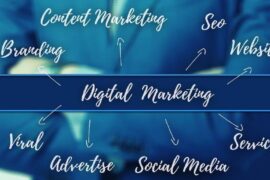Maybe your visitors are struggling to find what they need. Maybe the design feels tired. Or perhaps your site just doesn’t work well on mobile anymore. Whatever the reason, these are signs that your digital home is no longer doing its job. It is time for a redesign. But what does it mean exactly?
A redesign is a complete rethinking of how your site looks, works, and supports your business. It might involve restructuring pages to make navigation clearer, improving speed and mobile responsiveness, or updating content to reflect your current services and goals.
It’s also a chance to fix technical issues behind the scenes, improve SEO performance, and make your site more accessible to every user.
This is highly specialised work. It requires a multidisciplinary team with expertise in design, development, content strategy, SEO, and user experience. And that’s where things get complicated.
Are you planning to redesign your website? Here is what agencies sometimes get wrong.
Common Mistakes That Agencies Can Make
Even with the best intentions, agencies can miss the mark. These missteps often come at a cost, whether in lost traffic, missed conversions, or the need for yet another rebuild far too soon. Here are some of the most frequent (and avoidable) errors:
1. Not thinking about how people will find your site
Agencies don’t ignore SEO (the process of improving your website so that it shows up more often and higher up in search results on platforms like Google); they just forget about it.
During a redesign, they often remove pages or blog posts that were helping your web presence appear on Google and other search engines like Bing. They may change web addresses (known as URLs) without setting up redirects, which means links from other websites, or even your own, suddenly lead to error pages. That hurts your search performance.
Speed is another important factor. Google tends to favour websites that load quickly, especially on mobile. If your new digital home is filled with heavy images, messy code, or unnecessary animations, it might look good but load slowly, and that can push your rankings down.
Then there’s metadata, the page titles and descriptions that appear in Google search results. These help search engines understand what each page is about. They also encourage people to click on your link instead of someone else’s. If the agency forgets to update or include them, your site may show up less often, or in the wrong searches.
2. Building something that won’t last
Your website shouldn’t feel out of date after a year. It needs to grow with your business. That means making it easy to add new pages, update content, launch a new product, or change how information is presented as your goals evolve.
Some agencies, however, still build interfaces in a way that’s far too rigid. You might get a site that looks clean on the outside, but behind the scenes, it’s hard-coded, locked into a specific structure, or overly reliant on a developer to make even the smallest update. Need to add a landing page? Update a form? Shift a section on the homepage? Without a flexible setup, those small changes become time-consuming and costly.
A future-proof digital home uses modular, reusable components, pieces that can be moved, duplicated, or adapted easily. It should also have a content management system (CMS) that’s intuitive for non-technical users. The goal is to hand over a site that your team can manage without calling the agency every time you need to make a basic change.
3. Making technical mistakes during launch
It’s common for agencies to leave behind errors when a new site goes live.
For example, they might forget to tell Google the digital property is ready to be indexed. During development, websites are often marked as ‘noindex’, a setting that tells Google not to list it in search results. This is useful while the platform is still a work in progress. But if that setting isn’t removed at launch, your digital home will stay hidden.
Agencies may also break links without realising it. That means old web addresses (URLs) from your previous pages no longer work. For example, if you had a blog post at yourwebsite.com/blog/how-to-start, and it’s removed or moved to a different URL without a proper redirect, anyone clicking on the old link will see an error page. Google sees this too, and it can hurt your rankings.
Another key element is tracking tools like Google Analytics. This software helps you understand how visitors use your platform, where they come from, how long they stay, and which pages they visit.
If these tools aren’t carried over to the new site, you lose all that data. You won’t know what’s working and what’s not.
And then there’s poor code structure. This refers to the way a website is built behind the scenes.
If the code is messy, disorganised, or bloated with unnecessary elements, the site can be slow, hard to maintain, and difficult for search engines to understand. That can lead to lower rankings and a frustrating experience for users.
4. Forgetting who the site is really for
Sometimes, agencies design sites to impress their peers or follow design trends, not to serve their customers. The result might look impressive, but if it doesn’t actually work for your audience, it misses the point entirely.
Your site should be designed around the people using it. That means clear navigation, fast loading times, readable content, and an easy-to-follow structure.
If users arrive and can’t find what they’re looking for, or feel confused about what to do next, they’ll leave. It doesn’t matter how stylish the fonts are or how smooth the transitions feel. A website that frustrates users or buries key information under too much design will underperform.
Everything, from layout choices to page structure, should be guided by user behaviour. What do your visitors want to know? What actions should they take? What questions are they trying to answer? A successful redesign keeps those needs at the centre of every decision.
5. Not helping visitors take action
Attracting visitors to your website is only the first step. The real value comes when those visitors do something: fill in a contact form, request a quote, sign up for your newsletter, make a purchase, or book a call.
If your website doesn’t clearly guide people towards these actions, they’ll leave without doing anything.
This is where conversion-focused design comes in. That means including strong, visible calls to action — buttons or messages that tell users what to do next. For example, ‘Get a Free Quote,’ ‘Book a Demo,’ or ‘Start Your Trial.’ These prompts need to be obvious, well-placed, and repeated throughout the site.
Many agencies get so caught up in visual design that they forget these essential elements. They may use subtle buttons, vague wording, or simply forget to include enough points where users can engage. A beautiful site that lacks direction might impress visitors, but won’t convert them.
How to Choose a Good Agency
Before choosing a web design agency, take the time to research their background and pay close attention to their experience, particularly any work they’ve done within your industry. Industry-specific knowledge can make a real difference, especially when it comes to understanding your audience, your competitors, and the kind of functionality your site will need.
It’s worth arranging an initial meeting to see how they approach the conversation. A good agency will ask about your goals, your key performance indicators, and your target users. Their focus should be on strategy as much as design.
Consider how collaborative their approach is. Some agencies prefer to work in isolation, only involving clients at key milestones. Others take a more open, ongoing approach, involving you at every stage, welcoming your input, and ensuring the result reflects your vision as well as their expertise. It’s important to know which model you’re more comfortable with.
Check their reviews. Look for feedback on platforms like Google, Trustpilot, or well-known industry directories. You should also look closely at their technical skillset. Make sure they’re comfortable with the tools and platforms you want to use, whether that’s a specific CMS, e-commerce solution, or integration with third-party systems.
Finally, find out what kind of support they offer after the website goes live. Will they be available to fix bugs, make updates, or offer guidance as your needs change? Or do they intend to hand everything over and move on?
The Time Has Come
A website is often the first encounter someone has with your business. It sets the tone before you ever speak to them. Done well, it builds trust without effort. Done poorly, it undermines everything else you do.
So take your time, ask the difficult questions, and don’t settle for a website that merely looks new. Make sure it’s built to help you grow.































